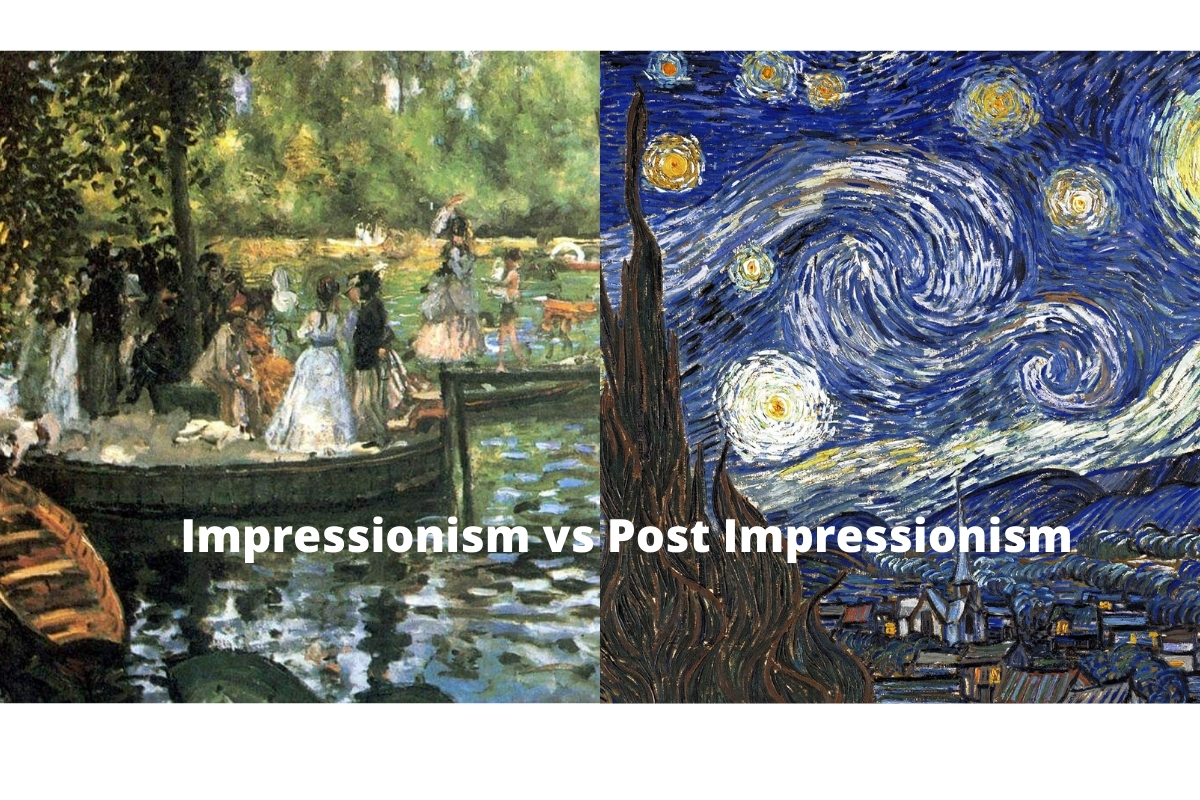Both Impressionism and Post Impressionism ushered in a dramatic change in the world of art.
Impressionism is an art movement that grew out of the older and more prominent Realism style of the 18th century. The new movement centered around prominent artists in France and took hold in that area of Europe in the mid-19th century.
Post-Impressionism began to take shape in the latter half of the 1800’s and featured works that were similar in nature to Impressionism, but were markedly different in other ways.
Artists from both movements used subjects that were based on real life scenes of social gatherings and other daily activities.
Many Impressionist and Post-Impressionist artists used bright colors that were characteristic of the art style and the wide, sweeping brush strokes were also iconic for Impressionist painters.
| Aspect | Impressionism | Post-Impressionism |
|---|---|---|
| Subject Matter | Everyday scenes, landscapes, and modern life | Personal expression, diverse subject matter |
| Technique | Loose brushwork, bright color palette | More structured, systematic approaches |
| Light and Color | Emphasis on effects of light and color | Symbolism, color theory, convey emotions |
| Capturing the Moment | Capturing fleeting moments and transitory reality | Focus on individual interpretation of reality |
| Influential Artists | Monet, Renoir, Pissarro, Degas | Van Gogh, Cézanne, Seurat, Gauguin |
Impressionism vs Post Impressionism
The main difference between Impressionism and Post Impressionism is the Post Impressionists use of forms that were based on geometric shapes and patterns, as well as colors that were sometimes more vivid and unnatural when compared to work that were considered to be Impressionist.
Also Read: Best Paintings of All Time
Impressionism Defined
Impressionist artists painted in a way that was similar to the era of Realism that had come before them, which depicted scenes in a way that accurately captured the colors, shapes, perspectives, and other elements in as much accuracy as possible.
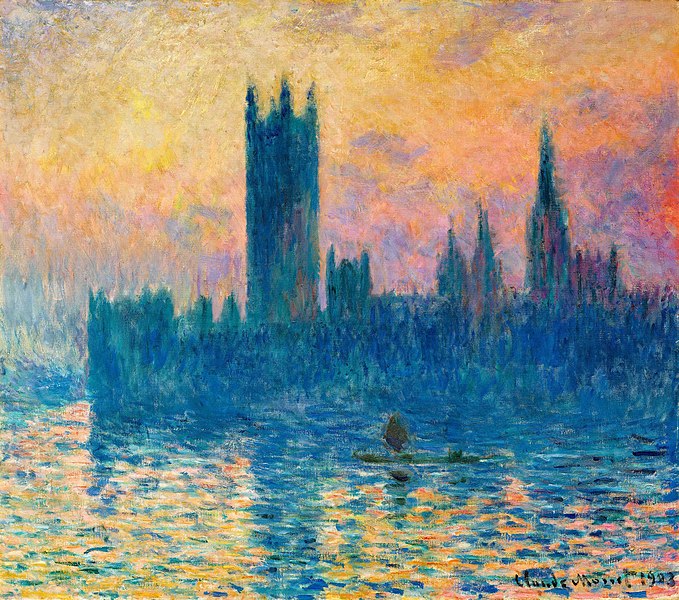
Realist painters worked hard to document the world around them and the Impressionist style was developed in an effort to focus more on the pleasurable aspects of life and society rather than unpleasant events or interactions.
For Impressionist painters, their focus was upon the world around them, but they sought to paint their subjects in a way that emphasized the more attractive aspects of social life and the natural world.
Also Read: Famous Impressionist Landscape Paintings
Many Impressionists painted scenes that involved nature or people interacting with one another in a natural setting. Other artists focused on cityscapes, and scenes from the vibrant Parisian life of the mid-to-late 1800’s.
The main difference in Impressionism vs Realism is that Impressionist artists painted their subject matter in a way that might depict what one would experience if they were to have a fleeting glimpse of the subject themselves. The coloration and imagery were sometimes mildly distorted and blurred in a way that left the viewer with an “impression” of the scene they were looking at.
The Purpose of Impressionism
The years before Impressionism emerged saw painters delve deep into a sense of duty to their fellow man in capturing the world around them. Many did this in striking detail, but the art style of Realism turned into a darker subject after some decades.
Painters in France and other parts of Europe began to use their ability to paint in an effort to enact social and political change.
Many Realism painters would depict the more gritty and undesirable characteristics of the world around them in an effort to bring about awareness and thus, change through public forums.
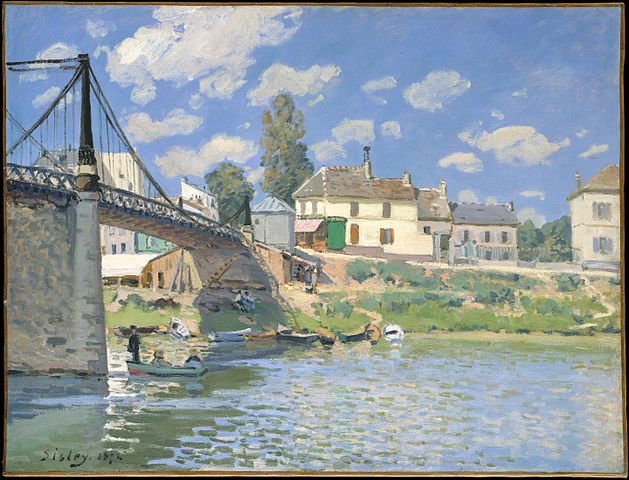
This method became a popular means for political activists and parties to get their messages across, but it also created a void of paintings that were aimed at the more pleasant aspects of life, which are more pleasing to the viewer.
Impressionism grew out of the Realist movement as a means for both the painters and the viewers to once again enjoy the subjects they were painting and looking at.
Impressionist painters chose to portray their subject matter with shorter brushstrokes in the early years of the movement, but later would employ wider, sweeping motions in their efforts to convey wind and other elements to the viewer.
Post-Impressionism Emerges
The Post-Impressionist movement grew out of a few artists in the 1890’s throughout France. Some of these painters were prominent members of the Impressionist movement, but were now exploring a new style of artwork that was considered to be more about the painter than the viewer.
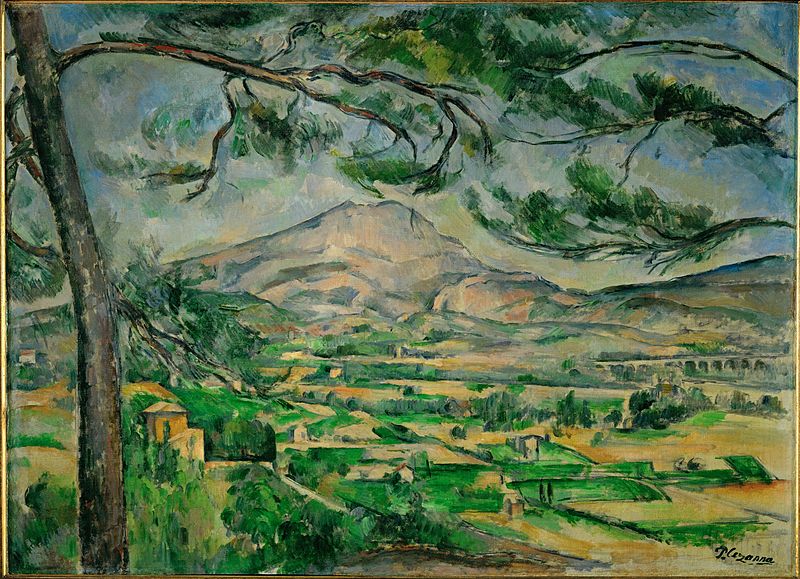
The painting methods of Post-Impressionist artists were not quite so unified under one central aesthetic approach, but rather saw painters begin to produce works that were exploratory in nature.
Some painters experimented with very short, succinct brushstrokes that developed a niche style of painting referred to as Stippling, while others painted with very wide, sweeping brush strokes and totally new presentations of colors and contrasting elements.
Post-Impressionism Defined
Unlike the painting styles that had come before them, Post-Impressionist artists depicted the world around them in a way that was more about leaving an impression and evoking an emotional response from the viewer.
Post-impressionist paintings are sometimes hard to recognize without knowledge of the specific year and location in which they were done as many artists began to vary their overall styles and methods to a degree that was vastly different.
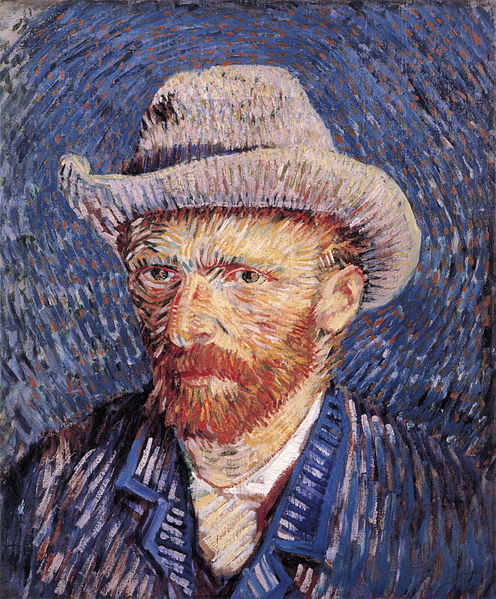
Many Post-Impressionist painters were known for producing works that involved patterned brush strokes that emphasized certain elements, as well as unnaturally vibrant or dark colors. Some artists began to experiment with their mediums and started painting on larger canvases while others focused more on giant motifs.
Post-Impressionist artists showed a clear departure from the more natural depictions of light and color. The movement would be dominated by a number of different artists who dabbled in many different painting methods and styles which constituted the Post-Impressionist genre.
The qualities of the Post-Impressionist movement was based on content that was largely symbolic in nature and involved more abstract elements than styles before them.
History of Post-Impressionism
While many artists were still painting in the Impressionist style during the latter half of the 1800’s, some artists saw a need to focus more on the subject matter of their works instead of the style of painting used or the emotions they hoped to elicit from the viewer.
As with other movements before them, it didn’t take long for the Post-Impressionist movement to take hold in France and spread to other parts of Europe during the late 19th century.
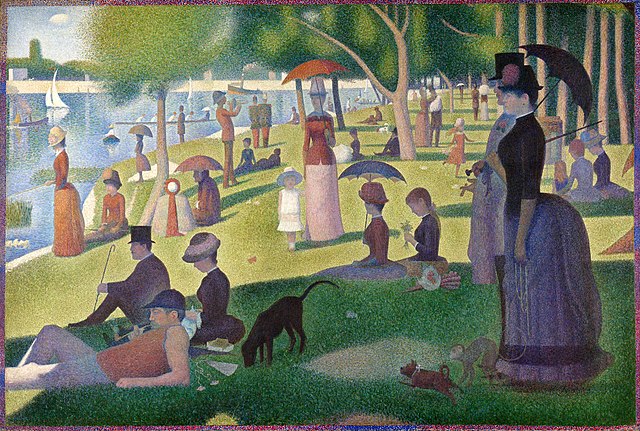
Artists who were closely associated with the Post-Impressionist movement included Paul Cézanne, Vincent van Gogh, Georges Seurat, Henri Rousseau, and Paul Gauguin.
While many of these artists had been part of the Impressionist movement, their works began to drift out of what art critics and historians consider to be the Impressionist movement and into Post-Impressionism.
Impressionists
Many famous Impressionist artists sought to portray their subject matter in a new light by experimenting with the natural lighting that illuminated various parts of the world around them. One such artist who is well-known for this is French painter Pierre-Auguste Renoir.
His works involve more light and vibrant colors than had been popular among the Realist painters before him. Renoir’s works ranged from social gatherings and the female form to scenes from Paris which featured a variety of striking colors, bright atmospheres and radiant tones.
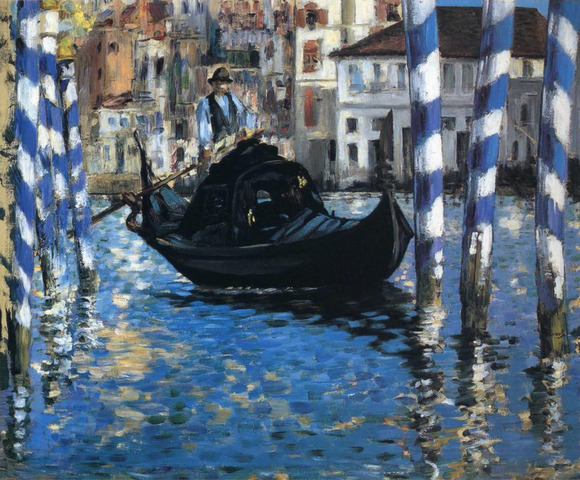
Claude Monet is one of the most iconic modern artists as it was his painting titled Impression, Sunrise that the movement was named after. Monet is known for broad fields of color that depict certain parts of France or scenes from French life during the mid-to-late 1800’s.
Art critics from the time noted that Monet’s works had a strange characteristic of being more pleasing to the eye when viewed from a distance.
While other artists focused on the intimate parts of French society, Edgar Degas was known for his efforts to depict the more open and public parts of Parisian life, especially within the city during that time.
Degas painted many cityscapes which featured the bustling French society at this time and he would later develop an affinity for painting the female form. His most notable works involve sporting events or other exciting portions of life inside one of the world’s most interesting cities during this time period.
Post-Impressionist Artists
Many artists made up the realm of Post-Impressionism as the movement involved a number of different styles and techniques of painting. None was more famous than Vincent Van Gogh.
The artist worked in a way that was truly novel for the time period and was hailed for his efforts to portray scenes in a way that communicated his own feelings at the time, however bleak or blissful. Van Gogh used bright colors and swirling or curved brush strokes in many of his works to convey his own state of mind.
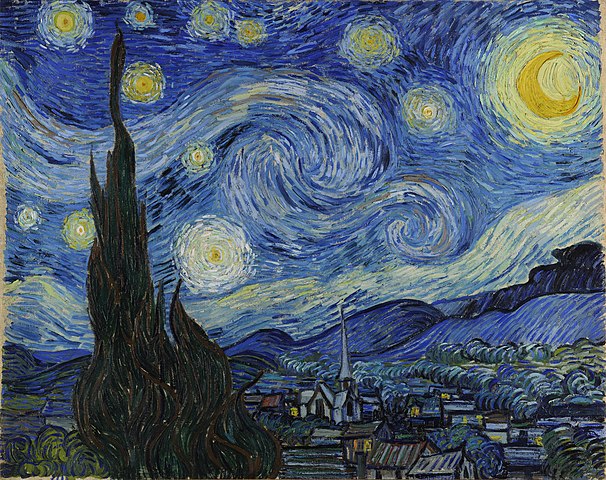
Paul Cezanne was more interested in restoring order to modern painting during his time as he was unsatisfied with the ever-evolving nature of painting and many artist’s desire to paint in a more abstract manner.
He painted in a more basic manner than some artists during the time and he wanted his works to be worthy of being exhibited in the most prominent museum of France and throughout the world.
Henri Rousseau began to explore painting natural scenes from a variety of places, most notably the jungle. Many of his most prominent works were based on his own travels to distant parts of the world where Parisian artists rarely ventured.
He painted in a way that emphasized the natural world around him, especially the lush and green elements of the rain-forest and the many plants and animals that are found there.
Conclusion
Post-Impressionist painters explored a wide variety of different methods of painting in efforts to create works that were more fulfilling and more closely-tied to the artist’s own inner feelings and mindset.
While Impressionism was a more unified effort to depart from long-held traditions of painting, Post-Impressionism is widely known as a movement with no unified cohesion in a particular style or method of painting.
Both art movements were some of the most prominent in history, and their lasting impression is still evident on Paris and throughout France.

